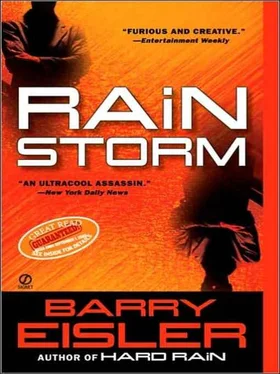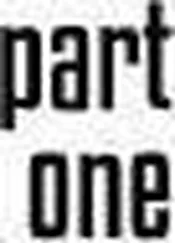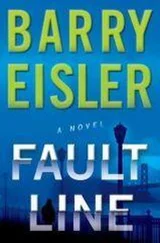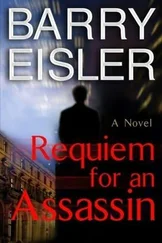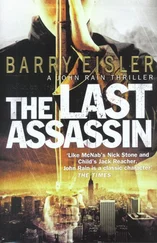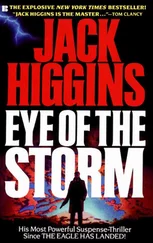But there was no answer. I tried the bell. Again, no answer.
I turned and taped one of the flyers to the door across the hallway from Crawley’s, placing it so that it covered the peephole. It was the middle of the day and the complex had a quiet feel to it, most of its residents, doubtless, out at work. Still, best to take no chances on someone watching through the peephole for the minute or so it might take me to get inside.
The door had two locks-the knob unit and the dead bolt above it. The knob unit would be a joke. The dead bolt was a Schlage. It looked like an ordinary five-pin, nothing particularly high security.
I put the flyers back in the briefcase and took out my key chain. On it, as always, were several slender homemade lengths of metal that I knew from experience worked nicely as picks for most household and other low-security locks. Next I took out the plastic felt-tip pen that I had picked up at the drugstore. I broke the metal pocket clip off the pen and inserted it into the knob unit, twisting it slightly to take up the slack. Then I worked one of the picks in. I had the lock open in less than ten seconds.
The dead bolt took longer, but not by much. Practice is the key. You can buy all the books and videos on lock picking that you want-and there are plenty out there-but if you want to get good, you buy the hardware, too: warded, disk tumbler, lever tumbler, pin tumbler, wafer tumbler, mushroom and spool pin tumbler, tubular cylinder, everything. You machine your own tools because the purpose-built stuff is illegal to buy if you’re not a bonded locksmith. You approximate field conditions: gloves; darkness; time limitations; calisthenics to get your heart rate up and your hands slightly shaky. It’s a lot of work. But it’s worth it when the time comes.
When I had the lock open, I dropped the picks back in my pocket and opened the door. “Hello?” I called out.
No answer.
I pulled the flyer off the door opposite and entered Crawley’s apartment, locking the door behind me.
I walked inside. Quick visual. Beige walls, beige carpet. Linoleum floor in the kitchen to my right. Large picture window and partially lowered white venetian blinds. Matching Ikea-style furniture: futon couch, lounge chairs, a glass coffee table with copies of Forbes and Foreign Affairs on it. Bookshelves jammed with serious-looking stuff on history and political science. A desk and a black leather chair. Large television set and speakers. A couple of potted plants.
There was a set of folding doors to my left. I opened them and saw a washing machine and dryer.
To my right was the kitchen. I walked in and looked around. The refrigerator held a quart-sized skim milk, some yogurt, a Tupperware container of pasta, a jar of spaghetti sauce. Everything was clean, neat, efficient. A functional place, used for making and ingesting simple meals and for nothing more than that. It seemed that Crawley lived alone. Single, or divorced with no children. Children, with visitation rights, would have meant a bigger place.
The bedroom and bathroom offered more of the same. A queen-sized bed on a platform, but only one night table next to it, with a reading lamp and digital alarm clock. In the bathroom, men’s toiletries laid out neatly around the sink. A white bath towel hung on the glass shower door, the edges lined up. I removed a glove for a moment and touched it. It was slightly damp, no doubt from this morning’s shower.
I imagined Crawley coming home this evening. How he might navigate the room would determine where I should wait. Where would he stop first? Let’s see, come inside, drop the mail on the coffee table. It was cold out; probably he would have a coat. Next stop, coat closet?
There was a large closet off the living room. I checked it. Boxes for stereo equipment. A vacuum cleaner. A set of weights under a thin coating of dust. And a thick wooden dowel for hanging clothes, running the length of the space, with a handful of unused plastic hangers dangling along it. The dowel was supported at its center by an angle brace joined to the wall. I pressed down on it and was satisfied with its strength. Perfect.
But no coats. This closet seemed to be used for longer-term storage needs. I went back to the bedroom. On the wall adjacent to the bathroom was a closet behind a pair of folding doors. I slid the doors open. Yes, this was the clothes closet. Four suits, with an empty hanger for a fifth. Five dress shirts, five more empty hangers. One shirt on his back, I assumed, four at the dry cleaners. A dozen ties. One overcoat, one waist-length leather jacket. One more empty hanger.
I could see that he was a neat man, a man who liked things to be in their proper places. All right then, drop the mail off, then straight to the bedroom, hang the coat in the closet. Likewise for the suit, maybe use the bathroom, then back to the living room for the mail, turn on CNN or C-SPAN, maybe then the kitchen for something to eat. Fine.
I went back to the storage closet and took out the stun gun. I had already tested it on the drive from D.C. and it had worked as advertised, sending out a satisfying blue arc of electricity between its electrodes at the push of a discreet side trigger. I laid out some of the plastic along the closet floor, removed the other items from the briefcase, took off the windbreaker, folded it, and placed it and the briefcase items on the plastic. I didn’t want any carpet particles on my clothes. The galoshes, which I was already wearing over my shoes, would protect my feet. Then I sat on one of the leather chairs and waited.
The room lit up briefly as the sun set outside the picture window, then gradually darkened as night came. I turned the closet light on. Night vision mode wouldn’t be useful for this; Crawley would turn the lights on when he came in and I didn’t want to have to adjust.
Every half hour I stood up and moved around to stay limber. The coffee was making its presence known, and three times I had to urinate. I used the bathroom sink for this purpose, letting the water run as I did so, avoiding the possibility that the toilet might still be running when Crawley came in and alert him to the presence of an intruder. Failing to flush would be unacceptable for similar reasons.
At eight o’clock, just after one of these quick trips to the bathroom, I heard the sound of a key in the lock. I got up noiselessly and moved to the closet. I held the door open a crack and turned off the light, the stun gun ready in my right hand.
A moment later I heard the apartment door open. The lights went on. Soft footfalls on the carpet. There he was, moving past me. Noting the curly, wheat-blond hair, the thin features I had seen in the photos Dox had taken, I watched him walk into the living room. He tossed the mail on the coffee table. I smiled. Call me psychic.
He shrugged out of an olive trench coat, grabbed a magazine, and made his way past me again, toward the bedroom. A minute passed, then another. And another.
He was taking longer to return to my position than I had expected. Then I realized: he was on the can, probably reading the magazine. I had planned to wait until he was back in the living room, but this was too good an opportunity to pass up. I picked up the spare sheet plastic and the duct tape and moved out of the closet.
I eased inside the bedroom and stood just outside the open door of the bathroom. I saw the trench coat, a suit, a dress shirt, and a tie on the bed. I set the plastic and duct tape down on the carpeting.
Another minute went by. I heard him stand up. The toilet flushed. I held the stun gun in my right hand at waist level, my thumb on the trigger. I breathed shallowly through my mouth.
I heard footsteps on the tile, then saw his profile as he emerged from the bathroom, wearing only a white tee-shirt and matching boxer shorts. I stepped in. His head started to swivel toward me and his body flinched back in surprise and alarm. I jammed the unit against his midsection and depressed the trigger. His teeth clacked shut and he jerked back into the doorjamb.
Читать дальше
